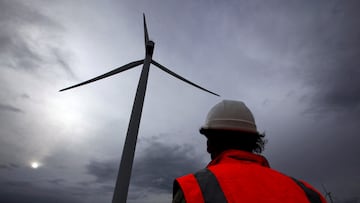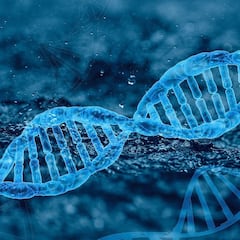US student solves 100-year-old mathematical conundrum to help unlock the power of wind turbines
An engineering student from Penn State may have helped to unlock new possibilities for the future of wind power.


After a nearly a century, a student at Penn State has a new take on a crucial mathematical principle that could have a big impact on the future of wind power.
Aerospace engineering graduate student Divya Tyagi has forwarded an amendment to work from Hermann Glauert, the famed British aerodynamist. The principle relates to air flow conditions and has big implications for wind turbine optimisation. Glauert’s optimum rotor disk solution has been the orthodoxy since he published The Elements of Aerofoil and Airscrew Theory in 1926.
Tyagi has managed to simplify Glauert’s work, while also adding in additional factors like the moment coefficients affecting the rotor of a turbine, and the bending of the blades due to wind pressure.
She explained: “I created an addendum to Glauert’s problem which determines the optimal aerodynamic performance of a wind turbine by solving for the ideal flow conditions for a turbine in order to maximize its power output.”
Her work has already earned her the Anthony E. Wolk Award for the best aerospace engineering thesis and it has very pressing real-world applications. Optimisation will be the name of the game if the United States and nations around the world are to adopt wind energy more widely.
“Improving the power coefficient of a large wind turbine by just 1% has significant impacts on the energy production of a turbine, and that translates towards the other coefficients that we derived relations for,” Tyagi explained. “A 1% improvement in power coefficient could notably increase a turbine’s energy output, potentially powering an entire neighbourhood.”
Despite this incredible achievement, Tyagi is already moving on to new areas of investigation. She is now pursuing a master degree and will look at airflow optimisation around a helicopter rotor. Her research is supported by the US Navy with the aim of improving flight simulations, a key element of pilot training, with better understanding of the dynamic at-play during flight.
Related stories
Get your game on! Whether you’re into NFL touchdowns, NBA buzzer-beaters, world-class soccer goals, or MLB home runs, our app has it all.
Dive into live coverage, expert insights, breaking news, exclusive videos, and more – plus, stay updated on the latest in current affairs and entertainment. Download now for all-access coverage, right at your fingertips – anytime, anywhere.


Complete your personal details to comment